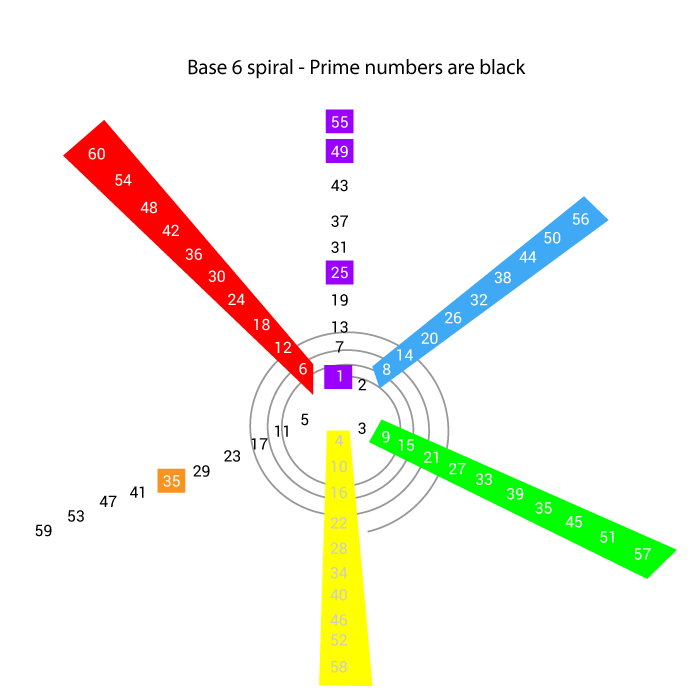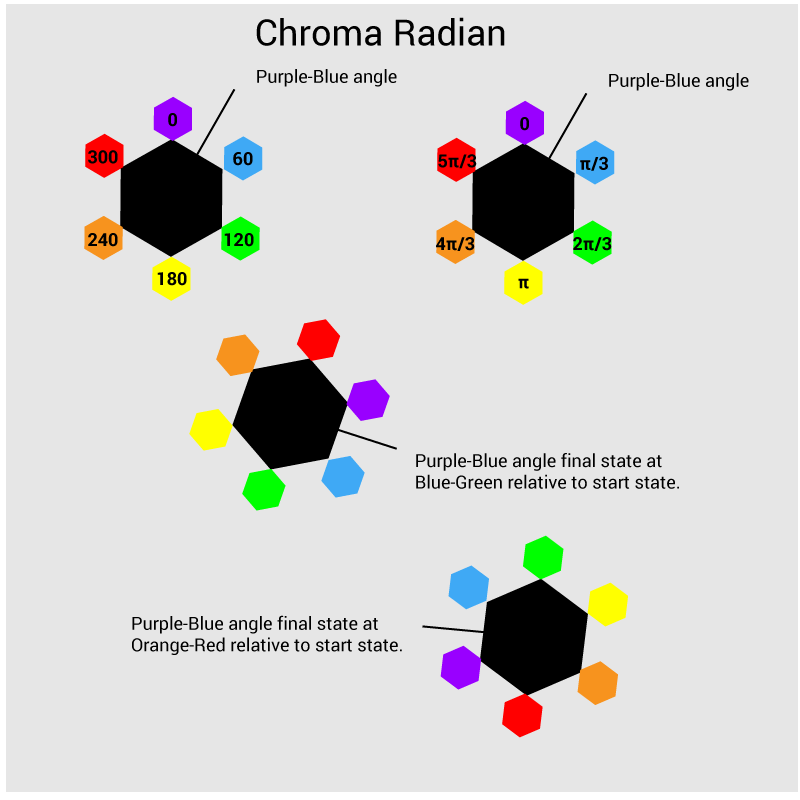
Today I was revisiting a prime number spiral I saw by Joey Grether a couple years ago that was disguised as a Nikola Tesla document. I think the spiral works better with 6 as you can see in the image above. It's curious why our perfect stream of prime numbers gets interrupted at 25, then again 35. Multiplying values using a spiral index like this could be very beneficial for measurements, it could be analogous to indexing databases that improve and shorten retrieval time. But this has me thinking further about relative mathematics. Rather than using absolute values we should try to use relative values.

Consider the image above. Rather than describing an object in terms of radians or degrees, we describe the rotation in terms of relativity to it's original position. We can color code 6 different possibilities of rotation. This type of measuring system won't be very useful in terms of describing accurate angels to build nice window frames. However, if we are analyzing huge amounts of data from particle accelerators and all we need is to calculate "probabilities" or "expected rotations" without any need for extreme accuracy, then a system like this might be very useful in saving computation time.
So, how can we describe velocity in terms of relativity? Rather than describing velocity in terms of the constant speed of light. If we can eliminate all constants from our equations and describe motion in terms of relative motion to other relative motion, then we might get more accurate results. For example, the speed of sound through Hydrogen compared to the speed of sound through Helium at an equal temperature. Rather than a constant like the speed of light.
- Chroma Crypto
Year 2, Mars 6, Redday